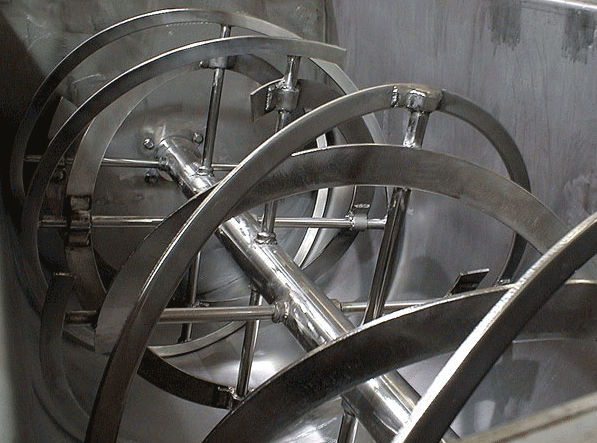What is a Ribbon Blender?
Manufacturers often must use blenders in order to combine various products as part of their manufacturing process. There are many different types of blenders available and anyone who plans to enter the manufacturing business should learn more about the types available, including the ribbon blender.
What is a Ribbon Blender?
A ribbon blender gets its name because the blades are angled in different ways from a central shaft so that it looks like ribbons of metal. The varied direction of the blades allows the blender to move parts of a mixture in different directions at the same time. The mixer often has a closed container, often in the shape of a trough. The shaft and blades are located inside the container. A ribbon blender can be either horizontal or vertical.
Uses for a Ribbon Blender
Ribbon blenders are often used for food and medicine manufacturing as those industries often must mix substances with a lot of particles. Because it is critical that the particles be mixed evenly, a ribbon blender provides the best opportunity to achieve that result. Ribbon blenders are also used in heavy industry.
Types of Ribbon Blenders
There are different types of ribbon blenders available. A ribbon blender with a u-shaped shell is the most traditional version. These have a full, open top with a flanged, filtered cover. Cylindrical shell ribbon blenders are used where vacuum, pressure or heating and cooling is required. Access is limited to small doors on top or on the sides of the blender. Semi-cylindrical shells are often used for cooking and cooling application where high levels of heat transfer are required. A double ribbon blender provides a more thorough mixing as it has an inner and outer ribbon that provides counter-directional flow so that the product remains in constant motion. A paddle-ribbon combination blender has inner ribbons with an outer paddle that works well with fragile, heat-sensitive materials.
A ribbon blender is the perfect choice for manufacturers that need rapid blending of materials. With a variety of styles to choose from, manufacturers are able to select the one that works best for their needs.
